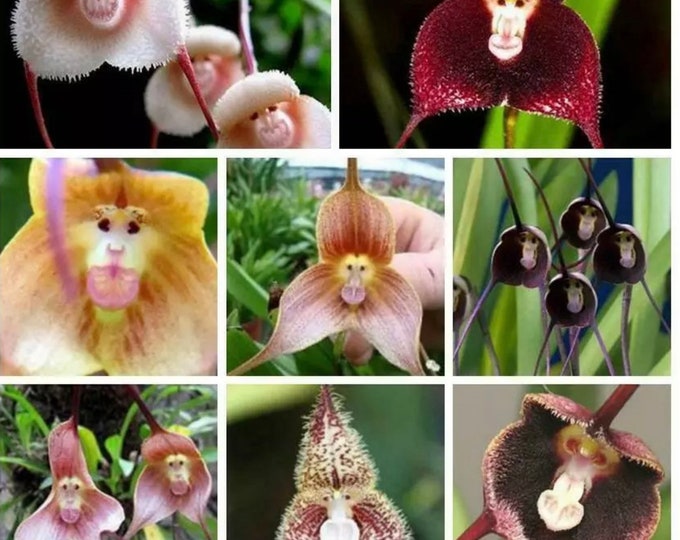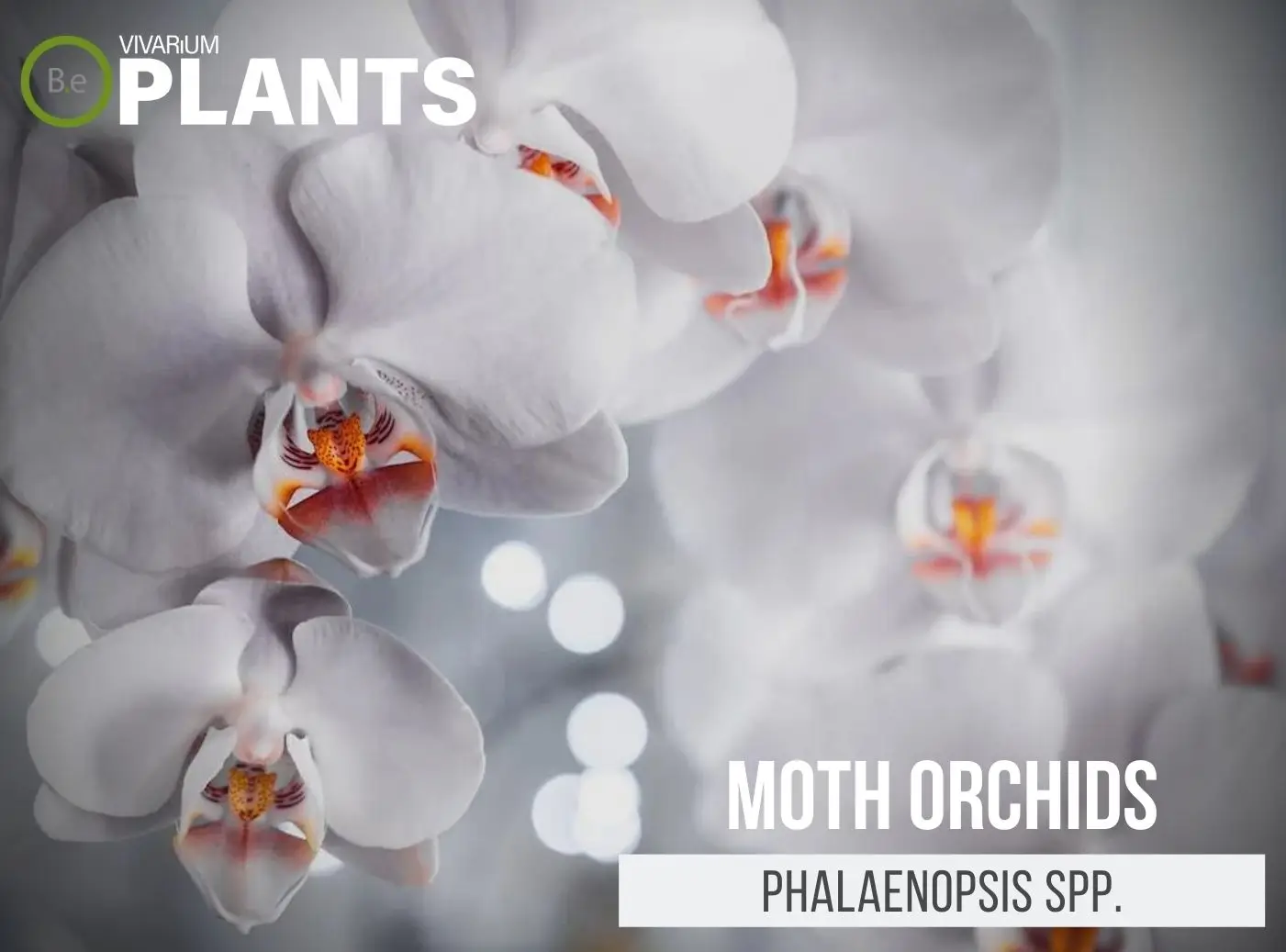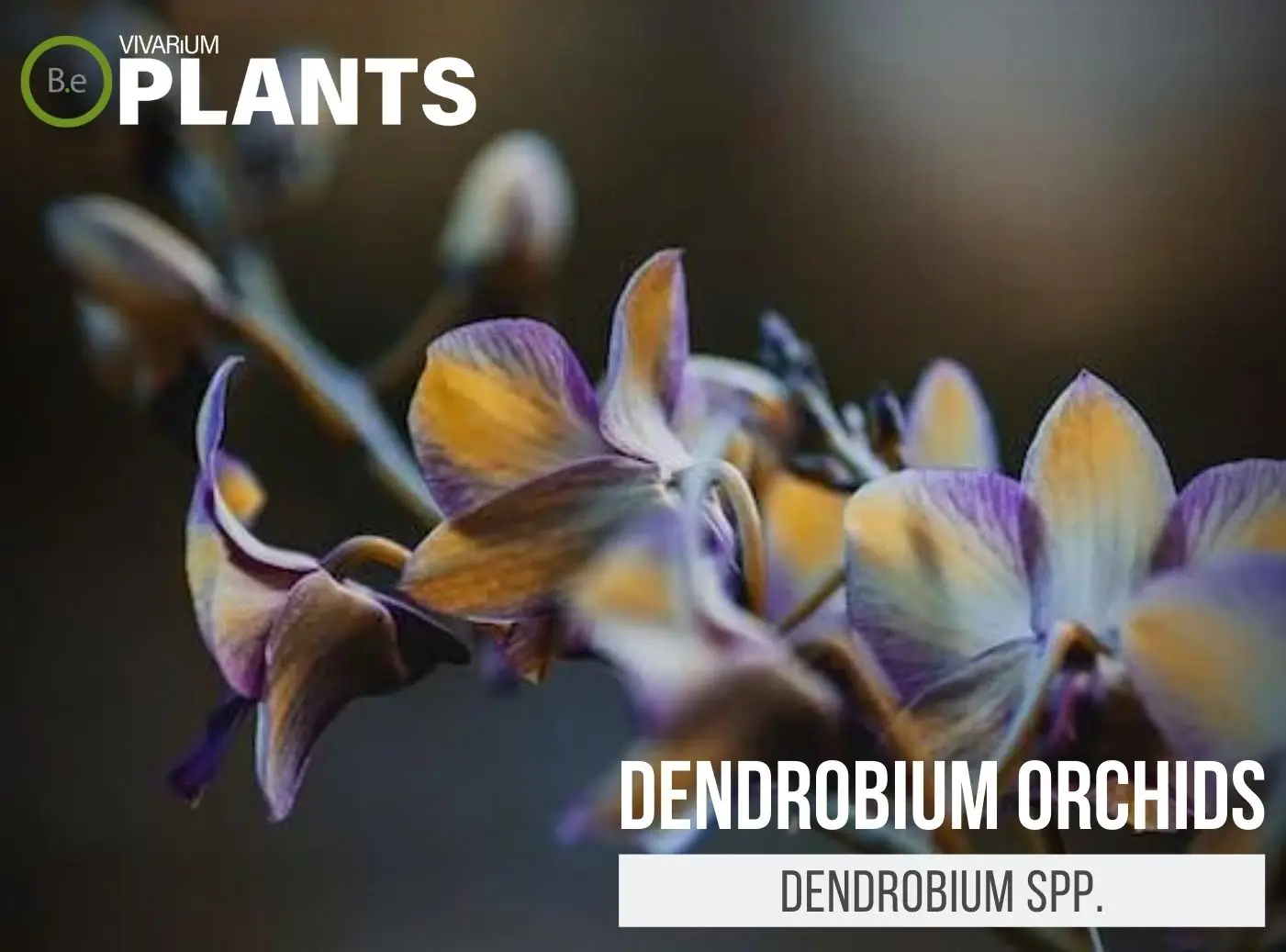Monkey Face Orchids are among the harder orchids to bloom consistently, yet they make the perfect addition to any terrarium or home garden.
With many spectacular features, this is an orchid that is sure to provide long–lasting beauty and enchantment.
Scientifically known as Dracula spp., these terrarium orchids come in a variety of colors and sizes, with a range of glossy green and white leaves, and vibrant orchid blooms.
They are known to thrive equally well in terrariums or other enclosures with humid climates.
In fact, their unique characteristics make them especially well-suited for terrariums, and they are sure to bring joy and visual pleasure to any space.
In this article, we will provide an overview of the key benefits that these orchids offer, as well as the best growing techniques for these exotic blooms.
| Quick Stats: | |
|---|---|
| Scientific Name | Dracula spp. |
| Common Name | Monkey Face Orchid, Monkey Orchid, Vampire Orchids |
| Family Name | Orchidaceae |
| Habitat | Tropical Epiphytes |
| Temperature | 60°F to 85°F |
| Height | 3 to 12 inches |
| pH | 5.0 to 6.0 |
| Lighting | Bright |
Table Of Contents:
ToggleWhat Are Monkey Face Orchids?
Dracula spp. is a small genus of epiphytic plants from the Orchid family.
These plants share a similar look with other semi-terrestrial epiphytic orchids like the Pleurothallis genus.
The leaves of these plants are typically thick and fuzzy, making them a great terrarium topic of conversation.


Cattleya Monkey Face Orchid
The Dracula spp. is an incredibly varied genus of plants encompassing almost 300 species.
A number of these plants will produce interesting star-shaped blooms in addition to their eye-catching foliage.
Most of these plants start as tiny seedlings and slowly develop as they attach themselves to trees or rocks in their natural environment.
Description
The Monkey Face Orchid is an incredibly diverse genus, but most will typically produce thick foliage with deltoid-shaped leaves.
They tend to splay out and create an attractive focal point in a terrarium.
The stems of these plants are usually thin and succulent.
The color of these plants can range from bright green to nearly black depending on the species.
Habitat
The Dracula spp. is native to the mountains of Mexico, Central America, and South America.
In nature, these plants typically grow epiphytically, that is, on other plants and trees.
They take advantage of the moist environment of the tree bark and don’t need soil to survive.
pH Preference
Monkey orchids will do best in neutral to slightly acidic soils with a pH range between 5.0 and 6.0.
They prefer soils that have good drainage to prevent root rot and constantly moist conditions.
Vivarium Type
The orchid genus Dracula is ideally suited to terrariums or vivariums with a humid environment.
These can include bottle terrariums, bowl terrariums, terrarium cubes, and high-humidity enclosures.
Good air circulation is important for their health, so a fan should be placed inside or around the terrarium.
Finally, make sure to observe the temperature range they prefer (preferably around 70–80°F) and to provide some humidity, such as by misting the terrarium regularly.
Vivarium Placement
The Dracula orchid is a great plant to use in humid tropical-themed terrariums.
When placed directly in a terrarium, they do best mounted high with an even distribution of bright lighting and moderate to low humidity levels.
Substrate
For optimal results, the substrate used should be a shallow-rooted, finely-textured medium like coconut fiber or moss.
Soil-based substrate mixtures are not the best choice for this species as the roots may become waterlogged easily.
Lighting
These plants require very bright lighting and typically do well with a range of 12 to 16 hours of light per day.
Dracula spp. will also respond nicely to supplemental terrarium lighting as long as there is a period of darkness each day.
Buy Monkey Face Orchid
When shopping for orchids, expect a few key indicators you are buying the best quality plant.
The plant should be pest free.
The source of the orchid will more than likely not be in bloom so don’t worry if it arrives without flowers.
Click the image below to find out more about the current price and other relative info:
Monkey Face Orchid Care and Propagation
Dracula spp. is a very unique and easy-to-care-for plant.
They can be propagated in a few ways; by division, by stem cuttings, or through seed germination.
Divisions should be done when the plants become too large and need to be trimmed back.
Stem cuttings can be taken with a sharp, sterilized knife and planted directly into the substrate.
When taken correctly, stem cuttings will usually root within a few weeks in the right conditions.
How to grow
To best grow Dracula orchids, the plants need an environment with plenty of humidity, bright light, and warm temperatures.
They do best when planted in a substrate that is slightly moist, adding a layer of sphagnum moss over the top can help to retain moisture.
A light daily misting is usually enough to prevent the roots from drying out.
Watering
The monkey face orchid should be watered once or twice a week and should never be allowed to go completely dry.
This species prefers to be on the more moist side and does best with a light misting every day to keep the leaves and roots hydrated.
Plants Similar To Monkey Face Orchid
Adding diversity to an enclosure is key to an aesthetically pleasing enclosure.
Try mixing up the look of your terrarium with different flora that can easily co-exist in the same types of environment.
Furthermore, if for some reason you find this orchid hard to acquire or would like to consider something similar to this terrarium plant…
Here are some other plants you might find may do well with or in the place of Dracula spp.:
Conclusion
Monkey orchids are one of the best plants for humid, lush terrariums or even some paludariums.
These plants will provide a unique focal point and can even be trained to grow on rocks and wood.
With the right amount of bright lighting and plenty of moisture, this plant can be cared for with relative ease.
They are also an incredibly varied genus, providing hobbyists with nearly 300 variations of shapes, sizes, and colors to choose from.
Frequently Asked Questions
Yes, the monkey face orchid (Dracula spp.) is a real plant native to tropical regions of South and Central America. It is a species of flowering plant in the orchid family and is known for its resemblance to a monkey‘s face.
Monkey face orchids are typically easy to care for and are moderate growers. With the right conditions, these plants can thrive indoors.
Dracula spp. is typically found in the tropical regions of South and Central America.
No, monkey face orchids (Dracula spp.) are not endangered. In fact, they are quite widespread and are not currently classified as threatened by the IUCN. Some subspecies of Dracula spp. may be threatened or even extinct in certain regions, but overall the species is not in danger of extinction.
It typically takes a monkey orchid between 2 and 7 years to bloom.




